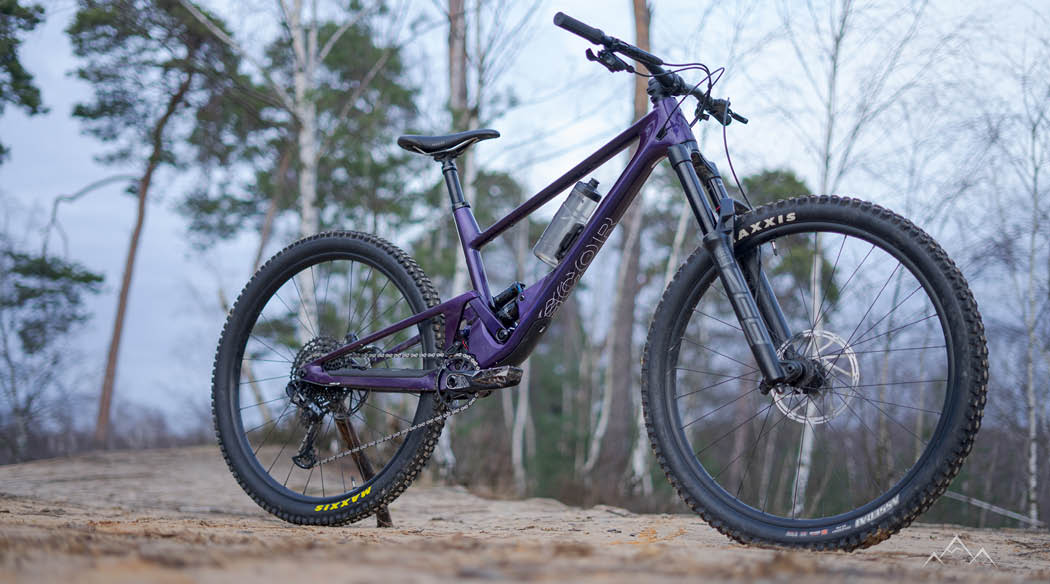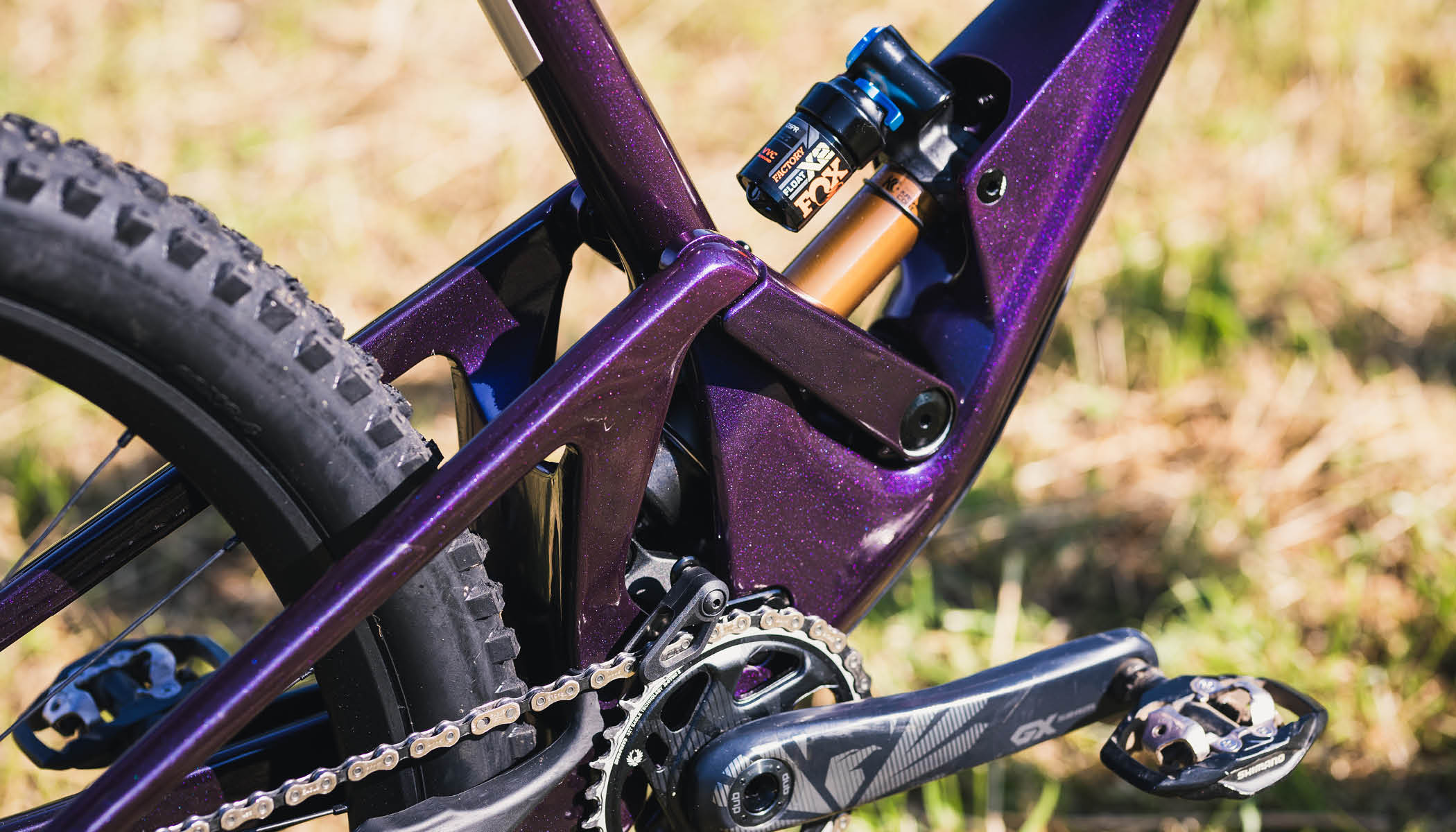
Suspension according to SCOR
The story behind our suspension design can be split into two parts, what we wanted to achieve and how we achieved it. If you’ve no interest in how your suspension works as long as it does, we totally get that. Go ride your bike knowing that our engineers have geeked out, crunched the numbers and worked overtime running the tests so your 4060 can deliver exactly what you want, when you want.
But, if you’re interested in what we set out to achieve and want to take a deep dive into how we did it, then we’re more than happy to break out the graphs and show our working out.
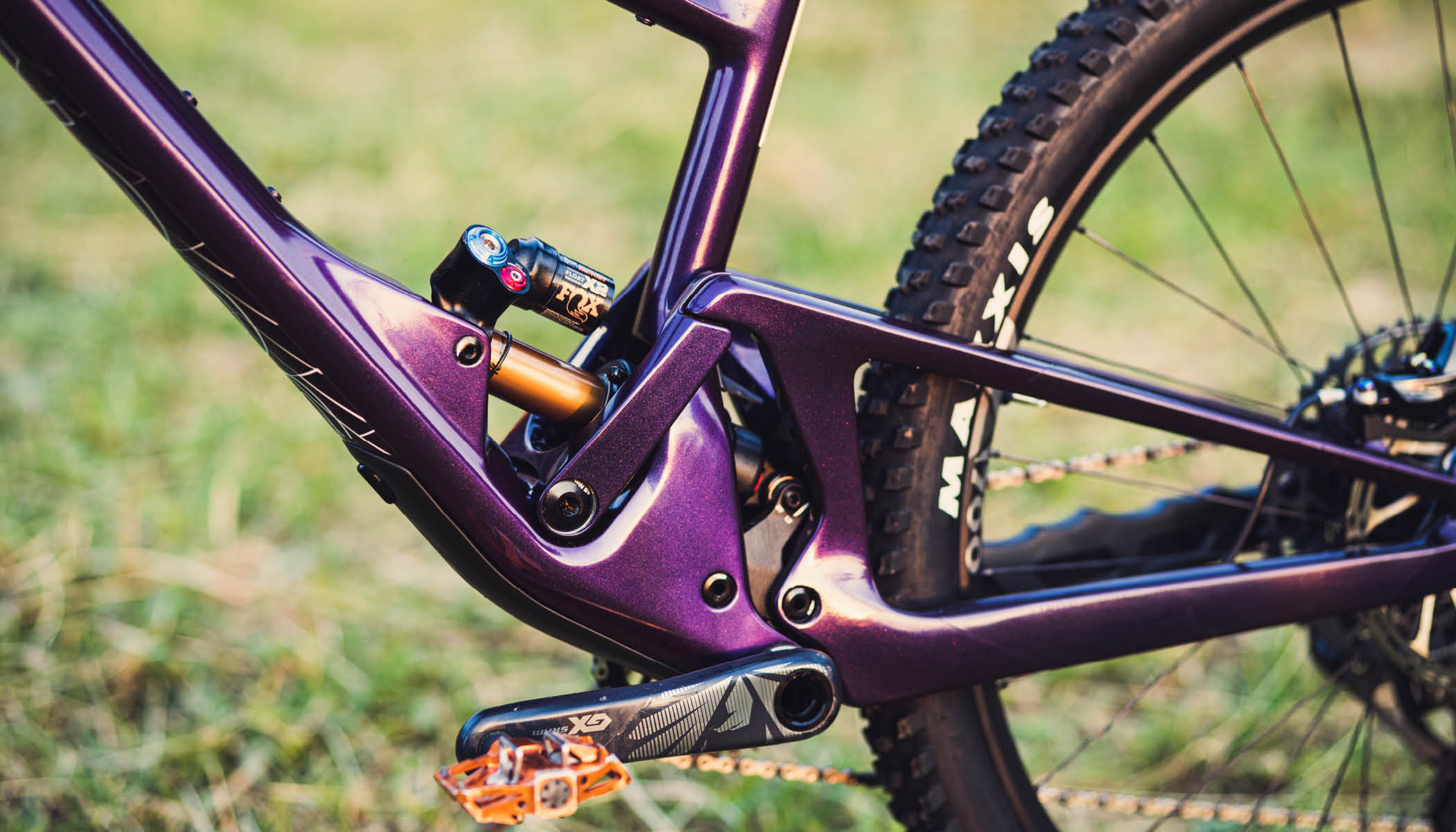
A highly tunable suspension system
What we wanted:
To build the bike we wanted we had to design our own highly-tunable suspension system. This would allow us to put the ride characteristics we were after right at the heart of the frame. Being riders and engineers, the outcome had to be elegant, practical and make our riding experience better.
How we did it:
Our lower link activated suspension design uses an instant center of rotation, also known as a virtual pivot point, which dictates the path of the rear wheel’s axle throughout the suspension’s travel. This path is controlled through the links and pivot points. How we position these also allows us to control the leverage ratio, anti-squat and anti-rise of the suspension system, three elements that play a role in how the suspension works and feels. Don’t worry if you don’t know what those terms mean, we’ll get into the technical nitty-gritty in a minute.
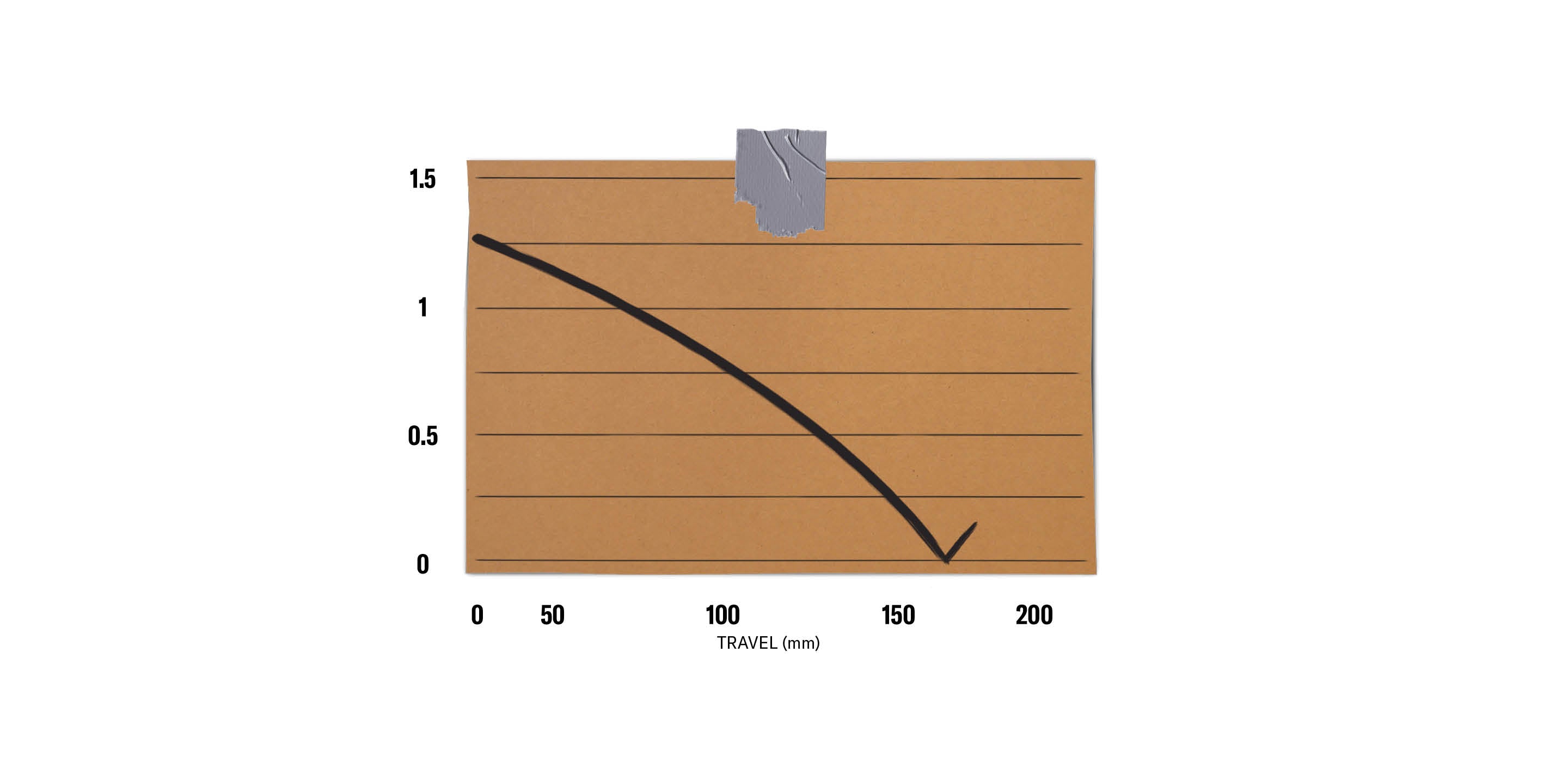
Active suspension with minimal chain feedback
What we wanted:
The relationship between rear suspension and drivetrain is a complex one. Inputs in one can have an effect on the other and successful suspension design is as much about managing this relationship as anything else. We wanted the suspension to remain active whether you were pedalling or not and we wanted to minimize feedback through the pedals while the suspension was doing its thing.
How we achieved it:
Let’s get technical and talk about anti-squat. Anti-squat describes how the rear suspension compresses under acceleration, typically pedalling. All bikes have some level of anti-squat, but how it is tuned plays a huge part in how the bike feels.
A high-level of anti-squat helps a bike to pedal efficiently by resisting compression but it also leads to pedal kickback (where forces are fed back to the rider as a jolt through the pedals) and a harsh feel when you're deep in the travel. A low level of anti-squat means the rear suspension will feel very active but can lead to ‘bobbing’, where inputs from the drivetrain (aka pedalling) create unwanted cycling of the rear suspension.
Anti-squat isn’t a fixed figure though, it changes as the bike goes through its suspension travel. Our bikes are designed to offer good support and pedalling efficiency around the sag point. As you go deeper into the travel the level of anti-squat reduces for minimal chain effects on impacts while at the same time keeping the suspension active.
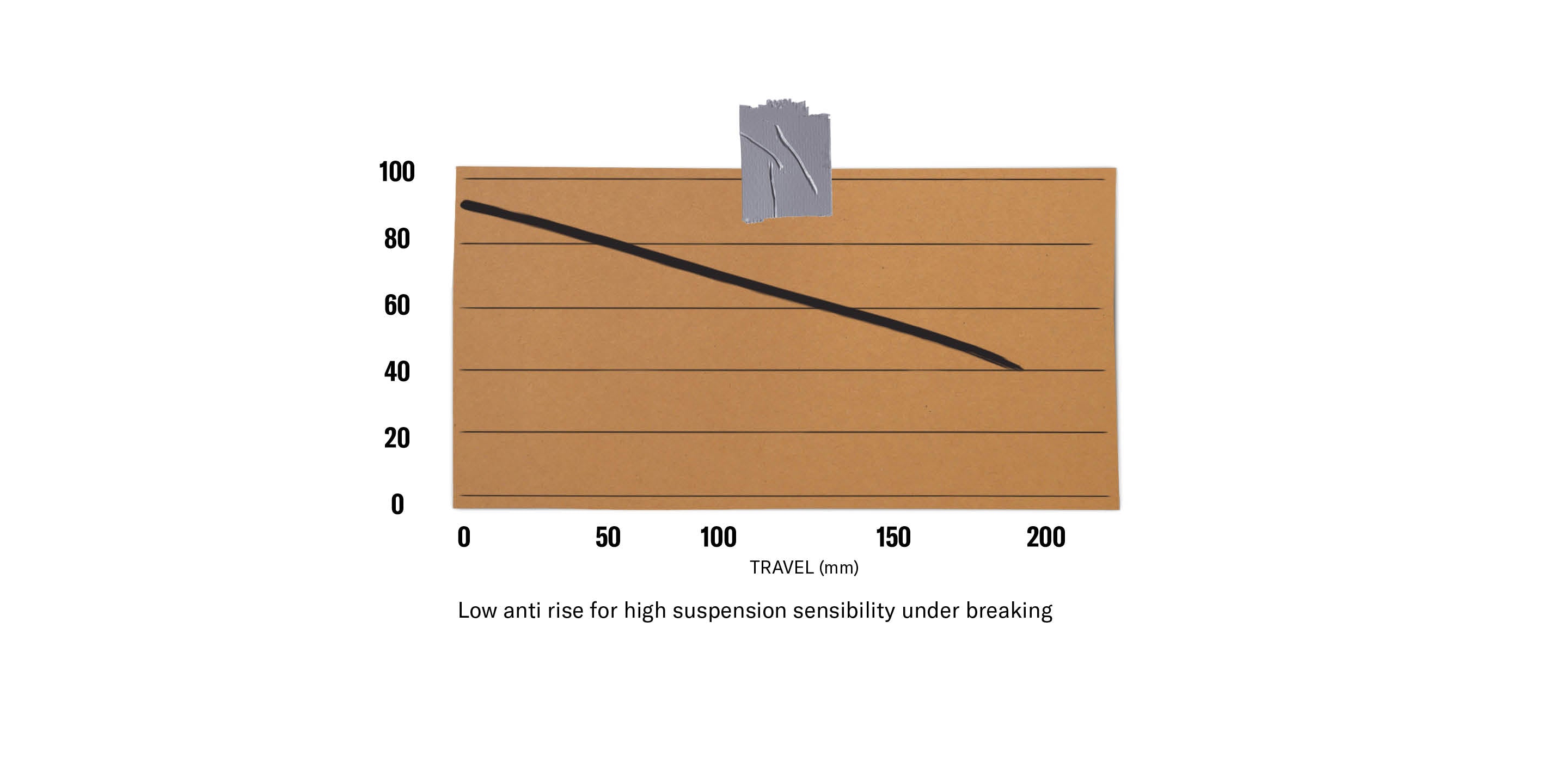
Active suspension under braking
What we wanted:
Just as the drivetrain has an effect on suspension so does braking. The best suspension in the world counts for nothing if it disappears when you touch the brakes, so having suspension that stays high in its travel, carries on finding grip and isolating you from bumps as you brake allows you to ride faster and stay fresher.
How we achieved it:
Just as anti-squat can be configured to control how the suspension reacts under acceleration something called anti-rise can also be configured to control how the bike reacts under deceleration.
When you apply the back brake to scrub speed out on the trail, the force created by your decelerating mass causes the rear of the bike to rise and the rear suspension to extend. Anti-rise counteracts the forward load transfer of bike and rider when braking and prevents this extension.
A high level of anti-rise means that braking will compress the suspension to counteract the load transfer and at the same time stiffen up the suspension, making it less active.
A low level of anti-rise means that braking has little impact on suspension, keeping it active, but can lead to geometry changes due to the load transfer.
As with anti-squat, all mountain bike suspension designs have anti-rise, but there’s some disagreement over whether a high or low level of anti-rise is preferable. Some believe that a high level of anti-rise is a good thing as the rear wheel is pushed against the ground when braking. However, our philosophy is that anti-rise should be low to let the suspension stay active under braking. When you're breaking you naturally put pressure through your rear wheel, so we believe having an active suspension that stays high in the travel is the way to go.
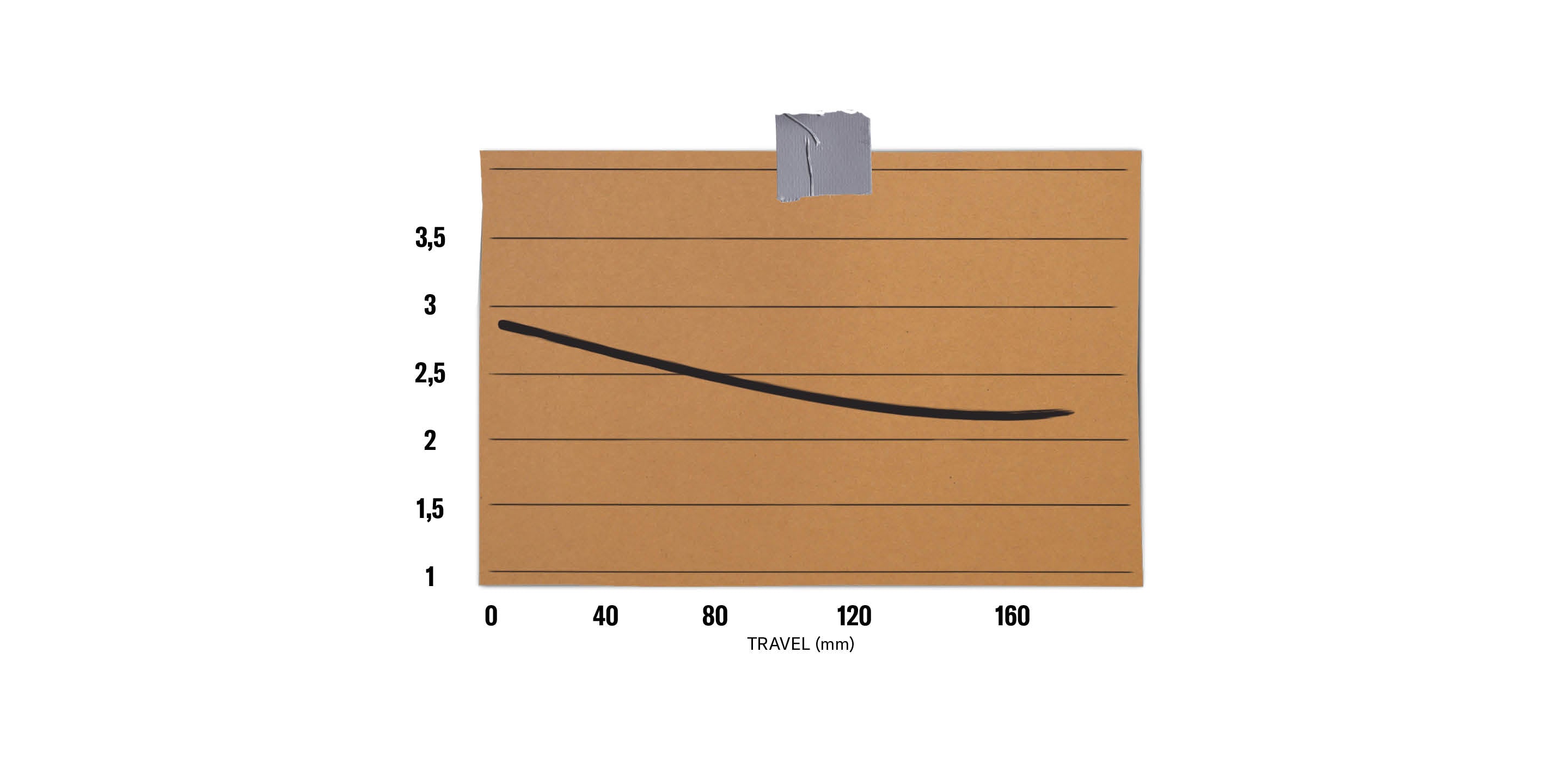
Ability to run air and coil shocks
What we wanted:
Some of us at SCOR like to run air shocks, some of us like coil shocks. Our suspension design can work with either option to keep both camps happy.
Air shocks are easy to set up, have great bottom out resistance and are comparatively light. Coil shocks have a supple off-the-top feel that gives superb grip and look cool - weight be damned.
Whether you choose air or coil is totally up to you, but as a general guide choose air for a poppy ride and coil for a more planted feel.
*Side note: The 4060 frame is designed to accommodate coil shocks from Fox and RockShox, Öhlins will fit as well. Before buying a coil shock from another brand you’ll want to check clearances.
How we achieved it:
Simply put, we tuned the leverage curve of the suspension to work with both air and coil shocks. To get more complex we need to get back to basics.
A coil shock compresses in a linear manner - that’s to say it compresses at a constant rate throughout its travel. This makes it great for initial sensitivity and lots of fine-detail grip but means it can bottom out easier than an air shock.
An air shock compresses in a progressive manner - as it goes through its travel it requires more force to compress it further. An air shock is better at resisting bottom out but loses a bit of the initial sensitivity of a coil shock.
These are general statements and modern high-volume air shocks aren’t a world apart from coil while offering many of the benefits of their benefits in a lighter, easier to adjust package.
Your rear suspension is essentially a big lever that is used to compress the shock. By using links and pivot points it’s possible to control how the lever exerts force on the shock and compresses it. By adding progressivity into the suspension design, we’re able to counterbalance the linearity of coil spring and provide that high sensitivity early on in the travel along with good bottom out resistance.

A low center of gravity
What we wanted:
A low center of gravity helps with control and stability, so getting the suspension linkages and components as far down within the frame as possible makes a lot of sense. It also allows additional stiffness to be built into the bottom bracket area, something that makes a big difference to the feel of the bike.
How we achieved it:
Using carbon fiber allows us to create the frame shapes we need to package the suspension low in the frame, at the same time it helps with providing the strength and stiffness we are after. We’ve a lot of experience working with carbon, so we know how to get the most out of it without using too much of it.
The suspension linkages are mounted in the junction between bottom bracket and downtube, getting weight as low as possible and helping minimize flex. Mounting the shock in such a low, horizontal position allows us to use a longer length shock which is better suited to the kind of hard riding we love. With the suspension mounted down low and out of the way we are also able to keep the seatube and toptube low and still have room for a water bottle.

Reliability
What we wanted:
Your bike should never be the reason you can’t go for a ride, so reliability and durability were hugely important to designing the suspension.
How we achieved it:
We specced Enduro Max bearings that require minimal maintenance, last ages and are easily sourced when the time comes to replace them. The rear of the shock is protected by a mudguard to keep the crud at bay.
